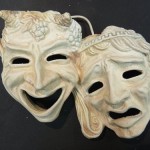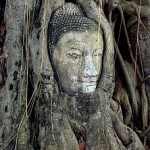Rogue One: A Star Wars Story opened in cinemas just before Christmas, an early present for its devoted fan base. The sales of the film suggest its success, and one reviewer I read put it in the ‘top 5’ of the eight films in the series. High praise, I guess.
I’m not sure it is that good. With all due respect to the sensibilities of its many young fans, Rogue One strongly contends with Episodes I-III as the worst installment in the entire Star Wars series. It was worth seeing, but not repeating.
It isn’t simply that Rogue One is clichéd, spiritless and void of the light humorous touches and personal vulnerabilities that humanize even its droids in Episodes IV-VI; that it falls flat without the operatic tones of John Williams’ soundtrack quickening his audience’s pulses; that the least robotic character in Rogue One is probably a droid; and it is not even that the ennervated heroine, Jyn Erso, fails to give the audience any reason why a band of rebels should sacrifice their lives for her. [Plausible characters aren’t motivated to act simply because the script tells us that there is (yet another) Death Star, and it’s a Star Wars film, after all.]
No, the chief failing of this film is that it ignores the single greatest virtue of the entire series, its portrait of a cosmic conflict between good and evil. And since it is that grand Manichaean conflict between the Force and the Dark Side that drives the plot of the Star Wars series, and animates its vibrant characters, Rogue One becomes a character-free zone.
If this is to be the future of the Star Wars series, it may be the point at which all those who love the original have to part ways with the next generation. All the CGI in Hollywood’s arsenal cannot conjure what its studios appear to have lost, the vivid imaginative apprehension of a moral and metaphysical conflict.
Science Fiction and Fantasy
As C.S. Lewis notes in his essay ‘On Science Fiction’, the best of the science fiction genre presents us with the fantastic, ‘stories about gods, ghosts, ghouls, demons, fairies, monsters, etc… an imaginative impulse as old as the human race working under the special conditions of our time.’ It was the fantasy of the original Star Wars series, with its appeal to the sheer wonder of ‘the force’ and great cosmic powers, that lent delight to the whole work. Without any of that religious sensibility, it really is just a formulaic adventure with some superficial political overtones.
The Political and Moral Drift since the Cold War
What can explain the strange departure of this series from its core? Perhaps we need to consider the Zeitgeist. Political and social allegories have always been a part of science fiction. In the original Star Wars series, the backdrop was the Cold War with the Soviet Union, though the abiding cultural memory was still defeat of a totalitarian regime marked by a similar, almost metaphysical, evil in WWII.
Since the fall of Communism, a clear imaginative void has been left in Hollywood. Epic themes are now rare, or recycled. And few movies actually adhere to the idea of a moral universe. This general malady has also affected the Star Wars series.
Episodes I-III did so by demythologizing the entire fantasy. It revealed that the Force was not some mysterious cosmic power, but derived from microscopic creatures in the blood called midi-chlorians. Lucas’s turn to reductive materialism probably outraged devotees of new age religious beliefs. But on an artistic level, it did worse: it banished the very element of sublime wonder that was its best feature. Revealing that the Wizard of Oz was actually a microscopic organism was the creative equivalent of turning to the Dark Side. To be fair to Lucas, the idea that impersonal forces should have good or evil designs are equally absurd on a macrocosmic or microcosmic scale. But that’s another subject. The point here, is that it was a terrible artistic decision.
If Lucas’s demythologizing his own creation weren’t bad enough, he added to it first by creating the irritating Jar Jar Binks and then by tracing the fall of the Republic to the political machinations of the evil Emperor Palpatine, with rather strained allusions to the Presidency of George W. Bush.
In Rogue One, the Force only really appears as the mantra of a blind quasi-Buddhist monk named Chirrut Ȋmwe. His endearingly hopeful ‘I am one with the Force and the Force is with me’ keeps him from several scrapes, but not an imperial blaster. Apparently the power of positive thinking is not enough. The Force – or his midi-chlorian count – wasn’t with him.
In either case, without the cosmic battle of good and evil, what was the conflict reduced to? It seemed like a characterless multicultural group taking on a white supremacist organization in space. Again, it seems like a strained political gesture.
This simply won’t do.
If not in our politics today, then are we not at least permitted in our fantasy to recognize the reality: that ‘our struggle is not against flesh and blood, but against the rulers, against the authorities, against the powers of this dark world and against the spiritual forces of evil in the heavenly realms’? (Ephesians 6:12)
I have no interest in a desiccated fantasy that denies that reality.












